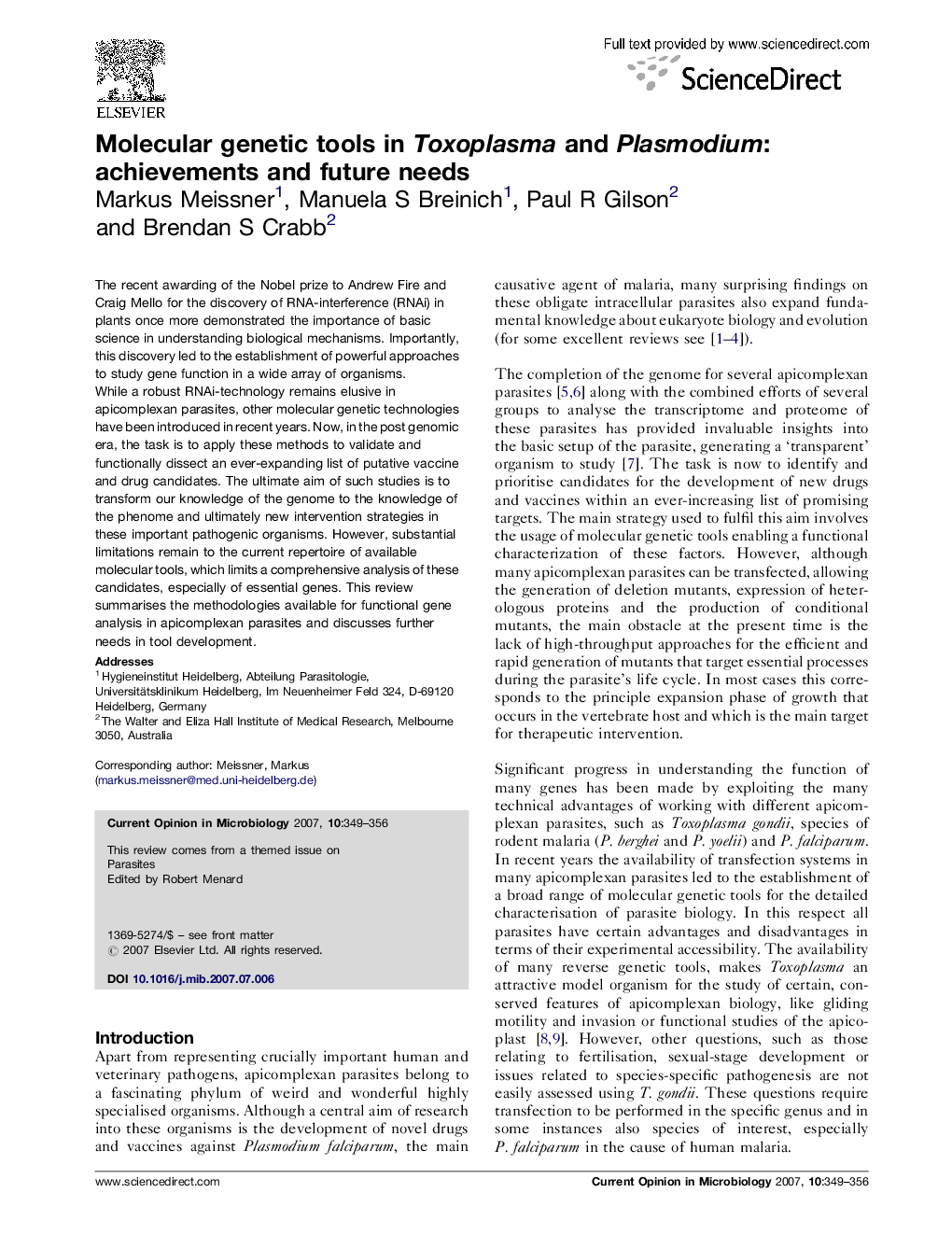| Article ID | Journal | Published Year | Pages | File Type |
|---|---|---|---|---|
| 3399650 | Current Opinion in Microbiology | 2007 | 8 Pages |
The recent awarding of the Nobel prize to Andrew Fire and Craig Mello for the discovery of RNA-interference (RNAi) in plants once more demonstrated the importance of basic science in understanding biological mechanisms. Importantly, this discovery led to the establishment of powerful approaches to study gene function in a wide array of organisms. While a robust RNAi-technology remains elusive in apicomplexan parasites, other molecular genetic technologies have been introduced in recent years. Now, in the post genomic era, the task is to apply these methods to validate and functionally dissect an ever-expanding list of putative vaccine and drug candidates. The ultimate aim of such studies is to transform our knowledge of the genome to the knowledge of the phenome and ultimately new intervention strategies in these important pathogenic organisms. However, substantial limitations remain to the current repertoire of available molecular tools, which limits a comprehensive analysis of these candidates, especially of essential genes. This review summarises the methodologies available for functional gene analysis in apicomplexan parasites and discusses further needs in tool development.
